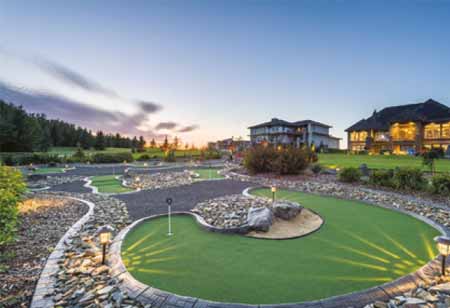Thank you for Subscribing to Construction Business Review Weekly Brief
Specials
- Apartment and Condominium Contractors Canada
- Decking Canada
- Architectural Glass Europe
- MEP APAC
- Construction Saudi Arabia
- German Apartment and Condominium Contractors
- Construction Law APAC
- Outdoor Construction
- Foundation Construction Canada
- MEP Canada
- Kitchen and Bath
- Cold Storage Construction APAC
- Precast Concrete Europe
- Construction Staffing Europe
- Pre-Construction Services
- Flooring System APAC
- Scaffolding Canada
- Swimming Pool Construction Canada
- Construction Management Canada
- Cold Storage Construction Canada
- Flooring Systems Europe
- Residential Construction
- Concrete Canada
- Construction Cladding Europe
- Construction Cladding APAC
- Concretes, Aggregates and Construction Materials APAC
- Concretes, Aggregates and Construction Materials Europe
- Commercial Contractors Europe
- Commercial Contractors APAC
- Dummy
- Construction Insulation, Coating and Waterproofing
- Construction Management APAC
- Landscaping Canada
- Construction Coating Europe
- Construction Tech Startups Europe
- Insulation Services Europe
- Mechanical Contractor Canada
- Mould Remediation and Testing Europe
- Swimming Pool Construction APAC
- Building Sealing Solutions Europe
- Construction Engineering Services
- Mechanical Electrical and Plumbing
- Roofing Systems Europe
- Architectural Glass APAC
- Startups APAC
- Construction Forensic and Owners Representative
- Flooring System
- Waterproofing APAC
- Wall Systems
- Safety and Compliance Europe
- Construction Bidding and Auctions
- Modular and Prefab Construction
- Architectural Glass
- Construction MENA
- Construction Demolition and Recycling Europe
- Modular Construction Europe
- Construction Interiors
- Steel Building APAC
- HVAC
- Doors and windows
- Construction Latam
- Building Information Modeling APAC
- Sustainable Construction APAC
- Building Restoration and Maintenance
- Commercial Contractors
- Specialty Construction
- Construction Engineering Canada
- Construction Engineering MENA
- Modular Construction Canada
- Modular Construction APAC
- Roofing and Siding Systems
- Workforce Management and Staffing
- Roofing Systems APAC
- Construction Consulting
- Steel Building Europe
- Construction Demolition and Recycling APAC
- Safety and Compliance APAC
- Concretes, Aggregates and Construction Materials
- Construction Cladding
The Role of Landscaping in Canadian Communities
The landscaping industry in Canada is a vital extension of the construction sector. This sector, which encompasses residential, commercial, and public projects, has undergone considerable transformation in recent years

By
Construction Business Review | Saturday, November 23, 2024
Stay ahead of the industry with exclusive feature stories on the top companies, expert insights and the latest news delivered straight to your inbox. Subscribe today.
The landscaping industry in Canada is a vital extension of the construction sector. This sector, which encompasses residential, commercial, and public projects, has undergone considerable transformation in recent years, driven by urban expansion, heightened environmental awareness, and a surge in demand for outdoor living spaces. Amidst the construction boom, particularly in urban areas, landscaping has become vital for enhancing properties’ aesthetic and functional value. Homeowners, businesses, and municipalities increasingly prioritize thoughtfully designed landscapes that boost property values, contribute to sustainable green spaces, and elevate urban appeal.
Industry reports indicate that Canada’s landscaping sector has maintained a steady growth rate of approximately 3 percent annually over the past five years. As of 2024, the market is valued at over CAD 15 billion, with continued growth projected as sustainable landscaping practices, innovative design solutions, and environmental initiatives continue to shape demand.
Canada’s landscape construction industry focuses on environmental sustainability through xeriscaping, native plantings, rain gardens, and permeable paving. These eco-friendly features support stormwater management, reduce irrigation demands and create habitats for local biodiversity. Green certifications like Leadership in Energy and Environmental Design (LEED) encourage sustainable landscaping, prompting builders and developers to integrate green spaces with long-term ecological benefits and energy savings.
As climate change intensifies, Canada is experiencing more frequent and severe weather, increasing the need for climate-resilient landscape solutions. Landscape designers are incorporating erosion control measures, fire-resistant plants, and durable hardscapes capable of withstanding extreme conditions. Additionally, droughttolerant plants and resilient materials help to protect landscapes and infrastructure, reducing environmental stress during extreme weather events.
Advancements in smart technology are transforming landscape maintenance and management. Automated irrigation systems, remote monitoring, and drones for aerial assessments are improving efficiency and lowering operational costs. Landscape architects also utilize 3D modeling and virtual reality to present design concepts, enhance client engagement, and streamline project approvals.





